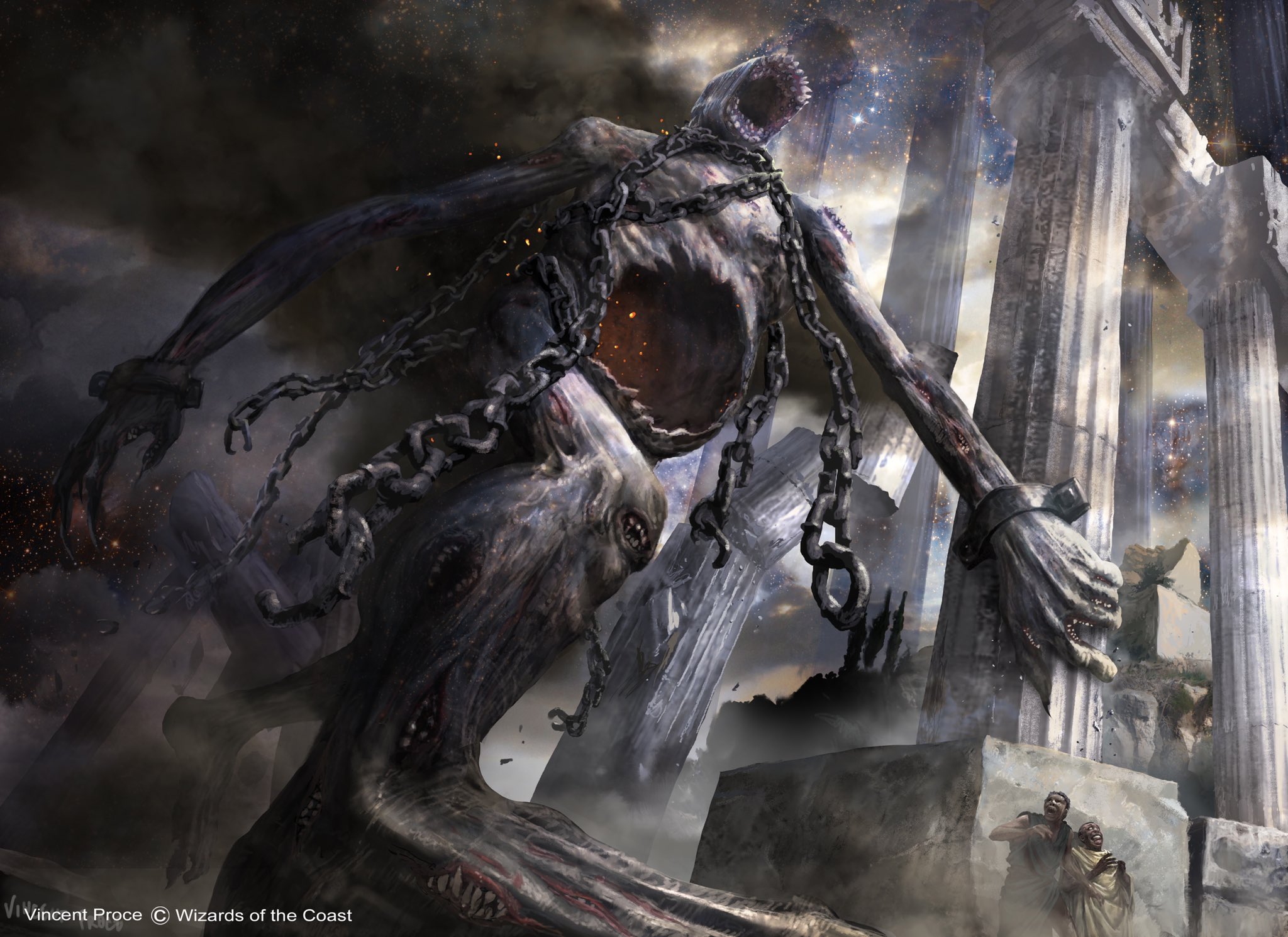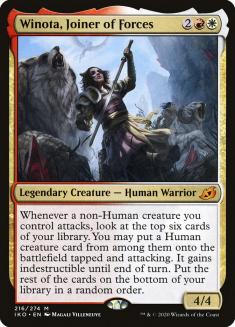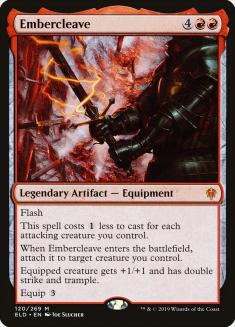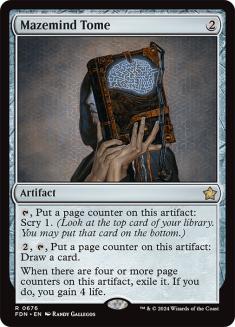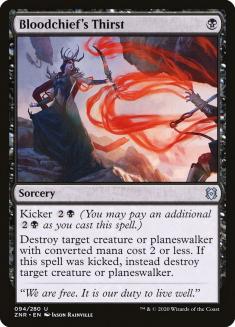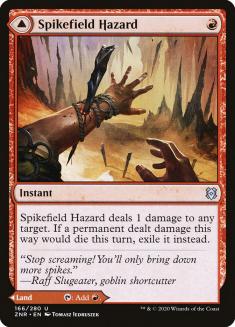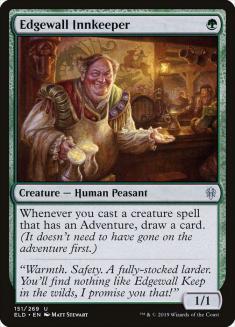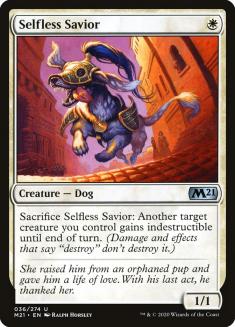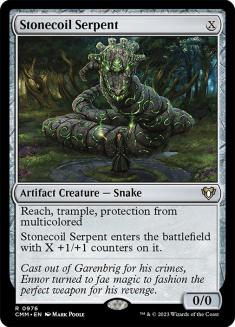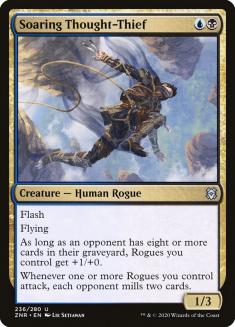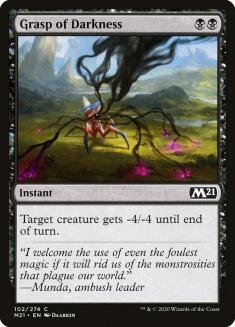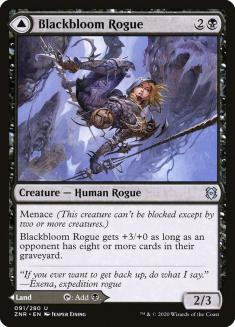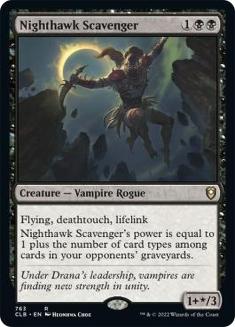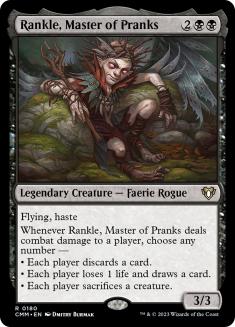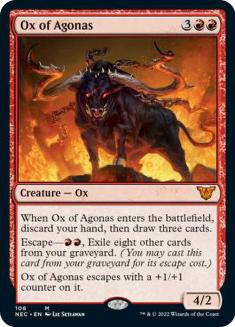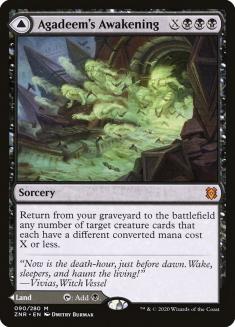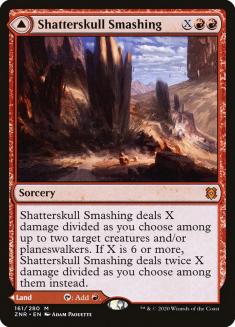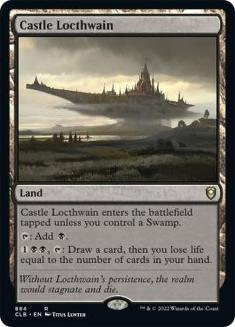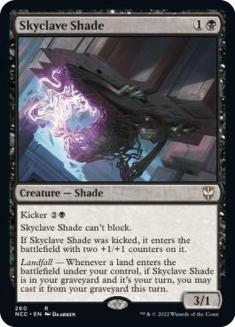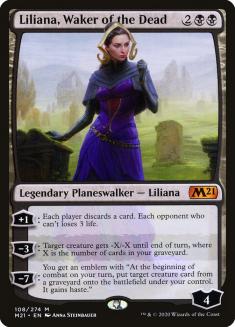It looks like we’ve made it through this portion of Zendikar Rising Standard where ramp has been long dominant, so what’s left? The strongest remaining payoffs appear to be Winota, Joiner of Forces, and Embercleave.
There are some other pseudo-engines and big payoffs that remain in Zendikar Rising Standard as well, but Rogues, Doom Foretold, Cycling, and others that have been semi-relegated to the sidelines in the past are all likely to take a backseat to these powerful red mythics in the short term.
What’s my pick for the strongest card remaining in Standard?
This isn’t exactly a bold claim. Bonecrusher Giant had a near-ubiquitous presence in the Grand Finals where Autumn Burchett and Emma Handy preemptively proved that the Adventures package in a deck can be extremely minimalistic while remaining effective. Bonecrusher Giant and many of the other Adventure creatures will continue to have their presence known in Zendikar Rising Standard despite no longer being super-charged by Lucky Clover and Escape to the Wilds. Gruul, in particular, is a reasonable bet for the Level 0 best deck coming right off these bans.
So what’s the through-line of the last couple of paragraphs? Minus the quick shout-out to Bryan Gottlieb’s favorite enchantment, all of these decks and engines are creature-based. If Bonecrusher Giant is king and creatures are what define Standard, where do you want to be? I think the answer is, finally, Rakdos Midrange.
Creatures (20)
- 2 Rankle, Master of Pranks
- 2 Murderous Rider
- 4 Bonecrusher Giant
- 1 Ox of Agonas
- 4 Kroxa, Titan of Death's Hunger
- 2 Nighthawk Scavenger
- 4 Magmatic Channeler
- 1 Blackbloom Rogue
Lands (20)
Spells (20)

My current take on Rakdos Midrange is bordering on a control deck. While Bonecrusher Giant, Nighthawk Scavenger, and Tymaret Calls the Dead are certainly capable of creating meaningful pressure, I’ve made a few adjustments that make getting onto the battlefield a bit slower.
Mire Triton was already a fairly weak link to the lists that saw success in CFB’s Clash event and the Red Bull Untapped a few weeks ago, and with even more reason to see an uptick in Bonecrusher Giant, I have absolutely no interest in putting a creature in a deck like this that generates a favorable exchange on-curve for my opponent’s Stomp.
What’s replaced it? A few more three-toughness creatures, Mazemind Tome, and removal. Magmatic Channeler already passes the Stomp test, so I’m happy to keep playing four copies of it. Mazemind Tome might be the most emblematic card of this cycle of bans, and is also a representative card of what makes Rakdos Midrange well-positioned in my eyes.
Even beyond its capacity for “one-turn kills,” Four-Color Ramp and Four-Color Adventures always made playing Magic on the axis of “interact and get ahead on cards” such a joke. Escape to the Wilds blew past anything Mazemind Tome was capable of in terms of raw cardboard generation and the snowballing was fast and dramatic with Omnath, Locus of Creation. Mazemind Tome is the poster child for getting a return on your patient investment. Similarly, as powerful as Kroxa, Titan of Death’s Hunger is, it isn’t going to blow your door down like the aforementioned ramp strategies did. Rakdos Midrange is more than capable of getting up cards between Adventure, the Tome, and Escape, but it all takes time and is largely predicated on killing your opponent’s creatures.
Naturally, as I’ve continued to note as problems and outliers have been removed from the format, this is a good thing. Is there still a capacity to get a little wild with Lotus Cobra and even pair Genesis Ultimatum with Terror of the Peaks for those aforementioned kills out of nowhere? Yes, but that’s also actually a good thing.
Ramp should exist, and it’s awesome and exciting to get paid for resolving your huge spell, but you shouldn’t be card-neutral with your opponent while resolving a card three turns ahead of schedule. Cards like Uro and Escape to the Wilds were too strong of bridges, while Omnath critically failed in my eyes for its ability to replace itself, not generating mana.
So enough of my tangent – let’s break down the choices a bit more in depth.
Generally speaking I want to default to DFCs as often as I can when filling in parts of my curve as Rakdos, in particular, has some of the absolute best DFCs in Zendikar Rising. Some targets moving forward include:
Obviously this isn’t extensive, but essentially my point is that my current split reflects a couple of facts:
Generally, Bonecrusher Giant can pick up the slack where Spikefield Hazard can’t, but if more decks are evolving to consider Stomp, then there needs to be more of an emphasis put on Bloodchief’s Thirst. Further, I think it’s natural to expect to see more planeswalkers enter back into the environment considering how much the natural end-game of the format has been gutted.
So in other words, I want to play as many Spikefield Hazards I can reasonably afford, but suspect that over time, and even very soon, Bloodchief’s Thirst will be at more of a premium.
Another simple split, but I suspect we will continue to see a rise in Scavenging Ooze and Stonecoil Serpent, not to mention the potential for a Selesnya Counters deck to rise from Standard’s ashes. The need for BB on Turn 2 is a real cost, so we really do want to avoid playing Grasp of Darkness as much as we can in Rakdos, but I think it would be foolish to assume that Heartless Act is enough to contain all of the format’s non-Stomp-able threats.
Two other points in Grasp of Darkness’s favor are being able to circumvent the combination of Selfless Savior + Winota as removal insurance, and being able to shrink a four-power Anax, Hardened in the Forge. These are pretty deep cuts, but these small details matter again. For now, I think Grasp is the stronger card and should be favored in situations where mana isn’t a factor.
My supplementary threats also have three toughness. Generally, I expect Nighthawk Scavenger’s value to be very high early on in the format, but if we do continue to see more Chainweb Arachnir I might consider cutting them or simply use them as sideboard cards against red strategies.
Blackbloom Rogue is fairly high on my list of “most underappreciated cards” as it is a relatively cheap but high impact threat later in the game that dodges Stomp and is also of course a DFC. Like I noted with Spikefield Hazard, if there’s anything remotely close to a tie, then I want to increase my land count as Rakdos has both so many sinks and really powerful mana-hungry mythic DFCs.
The bonus of being a land that can get exiled by Tymaret Calls the Dead is icing on the cake. That all being said, I’d limit the Rogue to two copies if playing Scavenger becomes undesirable, and look towards playing an additional Murderous Rider as my default should the metagame call for adjustments.
This seemingly odd collection of cards formulates Rakdos Midrange’s non-Kroxa end-game in my eyes.
To reiterate once again, putting so many functional lands in your deck improves the odds that your mythic DFCS get to act as spells in late-game situations. This is huge now that we’re seemingly finally entering a world where we’ll be participating in topdeck wars once again. This level of impact freerolled into your deck alongside Kroxa and the supplementary Ox of Agonas is a massive amount of power in long exhaustive contests. Further, this deck is just fairly good at getting both players hellbent, which improves Castle Locthwain, Agadeem’s Awakening, and the Ox.
Rankle is likely my favorite card in Zendikar Rising Standard, and I’m extremely optimistic for its inclusion, but I’m holding off on the third copy due to its potential weakness in a world that could be dominated by Gruul and Winota. Those decks are fairly good at going wide and mostly ignoring your 3/3 flyer. This argument extends even further to the absence of Liliana, Waker of the Dead in the maindeck, despite her inclusion being semi-popular amongst Rakdos Midrange builds in the past few weeks.
Rankle is so powerful that I doubt you’d ever eschew it completely, but I’m certainly hoping to include more copies in the long run.
Duress is the specific card that I want to note that could wildly fluctuate in its value as a maindeck inclusion here. Montserrat Ayensa went as far as to include four copies in her maindeck during the Grand Finals, and while it is an excellent tool, we’ll need more information before committing them back to the maindeck. Specifically, this is relevant to Rankle as Duress is your best weapon against Shark Typhoon, which is another nod against Rankle and even Nighthawk Scavenger.
Naturally, as the format becomes more about interacting and getting ahead on cards traditionally again, Shark Typhoon should begin to shine and potentially represents a natural point of churn in the future of this new Standard’s metagame.
The Sideboard
There isn’t too much out of the ordinary here, but I’ll highlight a few cards.
These supplementary anti-control threats specifically turbo-charge your Magmatic Channelers, bringing new value to them in sideboard scenarios. Presenting a resilient threat and getting both players hellbent is Rakdos’s MO against similar-speed strategies and I suspect that these two cards are the best at furthering that cause as of now.
Otherwise we’re just filling in holes as Rakdos tends to do as a color combination. While I’ve currently cut Shredded Sails with the removal of Lucky Clover from the format, I could see moving back to them depending on the level of play that Embercleave and Rogues in the future.
Extinction Event may prove to be the wrong card, but I have strong concerns for Anax, Hardened in the Forge and Scorching Dragonfire doesn’t do a good enough job of covering the green aggressive creatures, nor can it kill Torbran, Thane of Red Fell.
It’s possible that you’ve gotten to this point in the article and thought that many of my considerations are getting silly with the level of minutiae discussed. While on some level you might be right, I really want to emphasize something important: as of my current assumptions, there is a lot of potential for churn in this metagame. If Gruul, Winota, Mono-Red, and Rakdos Midrange are the forces of Week 1 and this format evolves around these pieces, then the creatures and removal spells you play on a week-by-week basis not only matter again, they’re critically important. Deconstructing your decklist to meet the needs of the format is going to be vital to success.
That is the sign of a good Standard format and I’m ready to jump back in.

